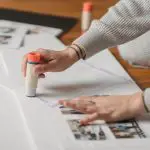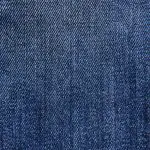When you're preparing to tackle a fabric project, testing fabric glue for compatibility is crucial to ensure a lasting bond. Start by gathering a mix of fabric samples like cotton, polyester, and silk, each representing your intended materials. You'll want to apply the adhesive according to the manufacturer's instructions and observe how each fabric reacts. But what happens if the glue doesn't perform as expected? Understanding these nuances can save you time and frustration in the long run, so let's explore the key steps to make your testing process effective.
Table of Contents
Key Takeaways
- Select a variety of fabric types, such as cotton, polyester, and silk, for comprehensive compatibility testing.
- Cut fabric samples into 4×4 inch pieces to maintain consistent testing sizes across all materials.
- Apply the adhesive evenly across the samples, ensuring consistent coverage for accurate comparison of bond strength.
- Allow the glue to dry completely before evaluating for discoloration, stiffness, and overall bond quality.
Understanding Fabric Glue Types
When you dive into the world of fabric glue, you'll find various types tailored for different projects and materials. Each type serves a unique purpose, so knowing what you need is crucial.
For instance, if you're working with delicate fabrics, a water-based fabric glue is your best bet. It's gentle, dries clear, and is perfect for lightweight materials.
On the other hand, if you're tackling heavier fabrics or need a more durable bond, consider a stronger option like a hot glue or industrial adhesive. These can provide the strength you need for items like upholstery or bags.
Fabric glues also vary in drying times; some dry quickly, making them ideal for fast-paced projects, while others allow more time for adjustments.
If you're looking for flexibility, fabric tape might be an option too. It's easy to use and can provide a clean finish, but it may not work well with all fabric types.
To make the right choice, always check the packaging for compatibility with your materials. Understanding these differences will help you pick the perfect glue for your project, ensuring a successful outcome.
Preparing Your Fabric Samples
Before testing fabric glue, gather your fabric samples to ensure you're working with the right materials for your project.
Start by choosing fabrics that closely resemble what you'll ultimately use. Consider the type, weight, and texture of each fabric, as these factors can affect the glue's performance.
Cut your samples into manageable sizes, ideally around 4×4 inches, to give you enough surface area for testing without wasting material.
Make sure to include a variety of fabrics, such as cotton, polyester, or blends, as different materials can react differently to adhesives.
Next, inspect each fabric for any treatments or finishes that could interfere with adhesion. If a fabric has a coating, such as water-repellant or stain-resistant finishes, consider testing both the treated and untreated versions.
Label your samples clearly to avoid confusion later on. You might want to note specific details about each fabric, like its composition and any unique characteristics.
This organized approach will help you track which glues perform best with each fabric type, leading to more successful projects in the long run.
Applying the Adhesive
Applying the adhesive requires precision to ensure a strong bond between your fabric samples. First, shake the adhesive well to mix its components thoroughly. Then, squeeze a small amount onto one of the fabric pieces, using a fine-tip applicator if necessary for better control. Make sure to spread it evenly, covering the area where the two fabrics will join.
Next, press the second fabric piece firmly onto the adhesive-coated area. It's crucial to apply even pressure to avoid air bubbles, which can weaken the bond. If you're using a fabric that tends to shift, consider using clamps or weights to hold the pieces together while the glue sets.
Keep an eye on the manufacturer's instructions regarding drying time. In most cases, it's advisable to let the adhesive cure undisturbed for the recommended period. If you're working with multiple samples, label each one to track which adhesive you used. This will help you assess compatibility later on.
Conducting Compatibility Tests
Conduct compatibility tests by carefully observing how well the adhesive bonds different fabric types together. Start by selecting a variety of fabrics, such as cotton, polyester, and silk. Cut small samples of each fabric, ensuring they're similar in size for accurate comparison.
Next, apply the glue according to the manufacturer's instructions. Make sure to use the same amount of adhesive for each test to maintain consistency. Allow the glue to dry completely, as this is crucial for evaluating compatibility.
Once dry, check for any visible issues like discoloration or stiffness. Pay attention to how the adhesive interacts with the fabric's texture and flexibility. You're looking for a clean bond with no signs of deterioration or damage to the materials.
If possible, test mixed fabric combinations, like cotton-polyester blends, to see how the glue performs across different fibers. Document your observations carefully, noting any fabrics that seem incompatible or show signs of weakening.
This will help you make informed decisions about which glue works best for your projects. By conducting these compatibility tests, you'll find the right adhesive that meets your fabric needs.
Evaluating Bond Strength
After assessing compatibility, it's time to evaluate the bond strength of the fabric glue you've chosen. This step is crucial because a strong bond ensures your project holds up over time. To test the bond strength, you can perform a simple pull test. Create fabric samples glued together and apply pressure to see how much force it takes to separate them.
Here's a helpful table to guide you in evaluating bond strength:
| Fabric Type | Bond Strength Rating | Comments |
|---|---|---|
| Cotton | High | Ideal for most projects |
| Polyester | Medium | Good for light use |
| Denim | Very High | Excellent durability |
As you conduct your tests, note any differences in performance based on fabric types and glue used. This will help you choose the right adhesive for your specific needs. Remember, the goal is to find a glue that not only adheres well but also withstands wear and tear. The stronger the bond, the better your project will withstand everyday use and stress.
Troubleshooting Common Issues
When you encounter issues with fabric glue, it's essential to identify the root cause quickly to ensure a successful bond.
Start by checking the materials you're using. Some fabrics, like silk or certain synthetics, may not adhere well to specific glues. If you're facing peeling or lifting, consider whether you've applied enough glue or if the surfaces are clean and dry.
Next, look at the drying time. If the bond isn't setting as expected, you might be in a humid environment or using glue that requires more time to cure. Always check the manufacturer's instructions for recommended drying times and conditions.
If your fabric glue isn't holding up under stress, it could be due to insufficient pressure during application. Ensure you press the fabrics together firmly and evenly for the best results.
Lastly, if you're seeing discoloration or stains, it might be a reaction between the glue and the fabric. Test a small, hidden area first to avoid damage.
Frequently Asked Questions
Can I Use Fabric Glue on Leather Materials?
You can use fabric glue on leather, but it may not hold as well as other adhesives designed specifically for leather. Always test on a small area first to ensure compatibility and desired results.
How Long Does Fabric Glue Take to Dry Completely?
Fabric glue typically takes about 24 hours to dry completely, but it can vary based on the brand and environmental conditions. Always check the label for specific drying times to ensure your project's success.
Is Fabric Glue Washable After It Dries?
Yes, fabric glue is generally washable after it dries, but it's crucial to check the specific product instructions. Some glues might lose strength or flexibility after washing, so always consider the intended use before applying.
What Are the Safety Precautions When Using Fabric Glue?
When using fabric glue, you should wear gloves, work in a well-ventilated area, and avoid contact with skin and eyes. Always read the label for specific safety instructions and keep it out of children's reach.
Can I Remove Fabric Glue After It Has Set?
Yes, you can often remove set fabric glue, but it may be challenging. Try using heat or solvents to loosen it. Always test a small area first to avoid damaging the fabric.
- Tetron Fabric for Marine Applications: Durability and Use Cases - June 18, 2025
- Tetron Fabric for Outdoor Furniture: Weather Resistance and Care - June 18, 2025
- Tetron Fabric for Wall Coverings: Style and Application Tips - June 18, 2025






